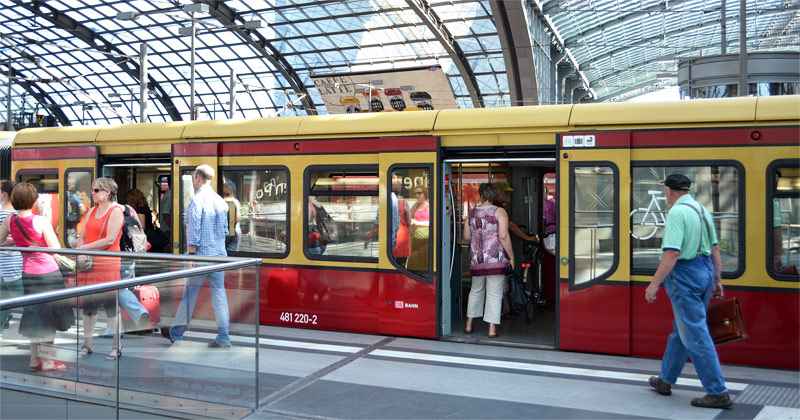Germany is renowned for its efficient and well-organized public transport system, which offers a range of options to suit various travel needs. Whether you’re commuting daily, exploring cities, or traveling between regions, understanding how to use Germany’s public transport effectively can enhance your mobility and convenience. This guide provides an overview of the key public transport options in Germany and tips for using them efficiently.
1. Overview of Public Transport Options
Trains
Germany’s rail network is extensive and connects cities and towns across the country. The Deutsche Bahn (DB) operates most long-distance and regional trains. High-speed ICE (InterCity Express) trains offer quick travel between major cities, while IC (InterCity) and regional trains cover other routes. For shorter journeys within cities, S-Bahn (suburban trains) provide frequent service and are well-integrated with other forms of public transport.
Buses
Buses are a common mode of transport for both urban and rural areas. In cities, local bus routes complement trains and trams, making it easy to reach destinations that aren’t directly accessible by rail. Regional buses connect towns and villages with larger cities. Bus services are usually operated by regional companies, and schedules can be checked via local transport websites or apps.
Trams
Trams are a popular choice in many German cities, offering a convenient and eco-friendly way to travel within urban areas. Tram networks are often integrated with local bus and train services, providing seamless connectivity. Cities like Berlin, Munich, and Leipzig have extensive tram systems that cover major districts and attractions.
Subways
Subways (U-Bahn) are available in major cities such as Berlin, Munich, and Hamburg. They offer frequent and rapid service, particularly useful for traveling across busy urban areas. U-Bahn stations are typically well-marked and accessible, with clear signage to guide passengers.
2. Navigating the Transport System
Buying Tickets
Tickets for public transport can be purchased at station ticket machines, online via transport websites, or through mobile apps. It’s essential to buy a ticket before boarding, as ticket inspectors frequently check for valid travel documents. Types of tickets include single journey tickets, day passes, and multi-ride cards. For regular travelers, consider options like monthly or annual passes for cost savings.
Understanding Zones and Tariffs
Germany’s public transport system is organized into fare zones, and ticket prices depend on the number of zones traveled. Each city or region may have its own zoning system, so check local guidelines to ensure you purchase the correct ticket. In some cities, a single ticket may cover multiple modes of transport within the same fare zone.
Using Apps and Online Tools
Several apps and online tools can help you navigate Germany’s public transport system. Apps like DB Navigator (for trains), BVG Fahrinfo (for Berlin), and MVV (for Munich) provide real-time schedules, route planning, and ticket purchasing options. Google Maps and other navigation apps also offer public transport directions and updates.
3. Tips for Efficient Travel
Plan Your Route
Planning your route in advance can save time and avoid confusion. Use transport apps or websites to check schedules, plan connections, and estimate travel times. Factor in potential delays or transfers, especially if you’re traveling during peak hours.
Travel During Off-Peak Hours
Public transport can be crowded during rush hours, typically from 7-9 AM and 4-6 PM. If possible, travel during off-peak times for a more comfortable experience and less congestion.
Be Prepared for Different Ticketing Systems
Different cities and regions may use various ticketing systems. Familiarize yourself with the local system where you’re traveling to ensure you understand how to buy and validate tickets.
4. Accessibility and Special Services
Accessibility
Germany’s public transport system is generally accessible to people with disabilities. Many trains, buses, and trams have low-floor access and designated spaces for wheelchairs. Stations often have elevators and ramps, although some older stations may have limited accessibility.
Special Services
For those with specific needs, such as reduced mobility or language assistance, many transport operators offer special services. Contact the local transport authority or check their website for information on available support and services.
5. Exploring Beyond the Cities
Regional Travel Passes
For travelers exploring beyond major cities, regional travel passes offer convenience and savings. Options like the Bayern Ticket (for Bavaria) or the Rheinland-Pfalz Ticket (for Rhineland-Palatinate) provide unlimited travel within certain areas for a day.
Long-Distance Travel
For long-distance travel, consider booking train tickets in advance to secure the best fares. Deutsche Bahn’s website and app offer discounts and special deals for early bookings.
Germany’s public transport system is a reliable and efficient way to travel, whether you’re commuting daily or exploring new destinations. By understanding the different transport options, planning your routes, and utilizing available tools and tickets, you can navigate Germany’s public transport system with ease. Embrace the convenience and connectivity of Germany’s transport network to enhance your travel experience and enjoy all that the country has to offer.
